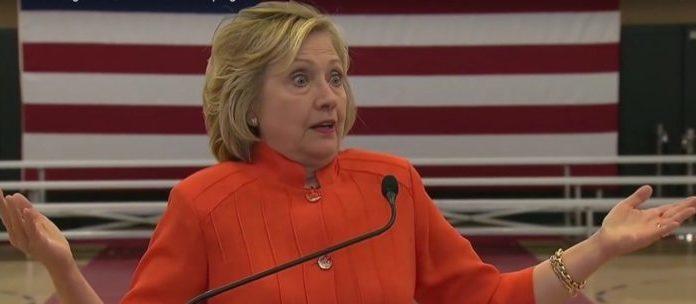Sen. Lindsey Graham on Tuesday released a bombshell of a letter from Director of National Intelligence John Ratcliffe suggesting that Hillary Clinton approved a plan to smear Trump on Russia in July 2016—and both Russian and US intelligence were aware of it.
Ratcliffe’s newly declassified dispatches come a day ahead of a highly anticipated hearing with former FBI Director James Comey before the Senate Judiciary Committee, which Graham chairs.
In the letter summarizing the release, Ratcliffe said that in July 2016, shortly after the Democratic National Committee announced its servers had been breached, US intelligence officials obtained a Russian intel analysis saying Clinton had approved the smear campaign linking Trump to Putin.
By mid-July, stories questioning Trump’s loyalties had appeared in the Washington Post and New York magazine.
That same month, the Clinton campaign also commissioned ex-British spy Christopher Steele via the Fusion GPS opposition research firm to generate reports that relied on questionable sources who were likely Russian agents.
On July 31 of that year, the FBI officially launched its “Crossfire Hurricane” investigation, based at least partially on the information presented in the Steele reports.
Ratcliffe said it was impossible to determine whether the Russian analysis that the US intercepted was genuine or also part of the disinformation campaign it had undertaken.
“The IC does not know the accuracy of this allegation or the extent to which the Russian intelligence analysis may reflect exaggeration or fabrication,” he wrote.
But regardless of what the Russians may have known or what role they played in assisting the Clinton campaign, Ratcliffe noted that then-CIA Director John Brennan had acknowledged taking the information to the highest level.
“According to his handwritten notes … Brennan subsequently briefed President Obama and other senior national security officials on the intelligence, including the ‘alleged approval by Hillary Clinton … to vilify Donald Trump by stirring up a scandal claiming interference by Russian security services.'”
Although the letter does not specify at what point Obama was briefed or what actions he took in response, publicly he took little action prior to the November election other than to issue Russia a stern, generalized warning about interference.
However, Ratcliffe did reveal that the matter was referred for investigation to the FBI in early September.
It does not indicate whether Comey or lead investigator Peter Strzok chose to pursue any leads in the Clinton smear campaign, which intelligence formally indicated was “a means of distracting the public from her use of a private mail server.”
While prospects remain uncertain whether the Justice Department’s Durham investigation into the Russia hoax will conclude before the November election, Graham has taken matters into his own hands by pushing forward with the latest Senate Judiciary inquiry.
He also has pressed Ratcliffe and Attorney General William Barr to expedite the declassification process and make as much available as possible to the public.
That has resulted in several substantial revelations, such as the disclosure last week that Steele’s primary sub-source was likely a Russian agent and questions over whether the Mueller team that investigated Trump’s alleged Russia ties had illegally wiped their phones.
“Additional declassification and public disclosure of related intelligence remains under consideration,” Ratcliffe said; “however, the IC welcomes the opportunity to provide a classified briefing with further detail at your convenience.”

